Covariance Functions and Hyperparameter Optimization
Neil D. Lawrence
GPy: A Gaussian Process Framework in Python
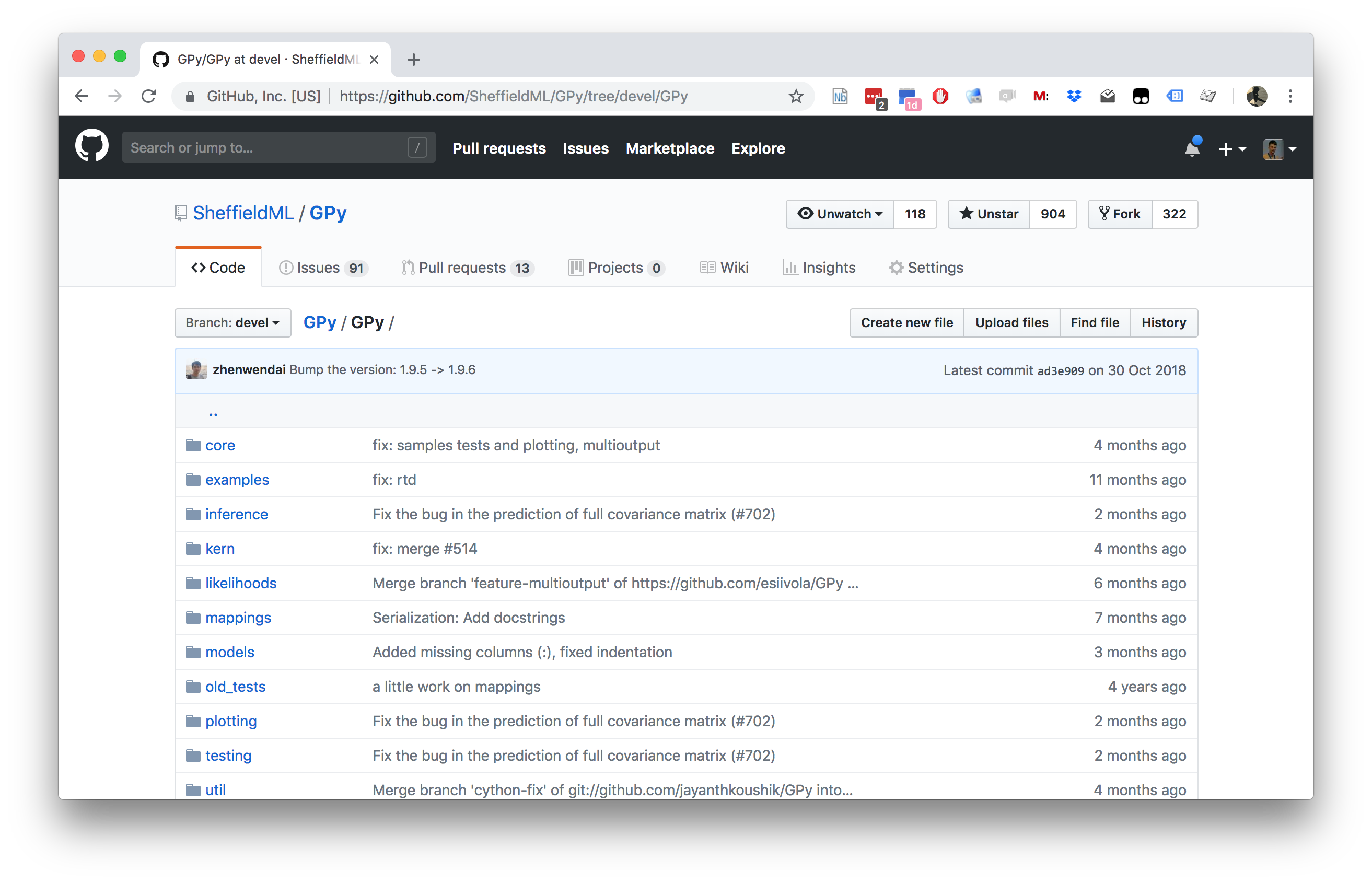
GPy: A Gaussian Process Framework in Python
- BSD Licensed software base.
- Wide availability of libraries, ‘modern’ scripting language.
- Allows us to set projects to undergraduates in Comp Sci that use GPs.
- Available through GitHub https://github.com/SheffieldML/GPy
- Reproducible Research with Jupyter Notebook.
Features
- Probabilistic-style programming (specify the model, not the algorithm).
- Non-Gaussian likelihoods.
- Multivariate outputs.
- Dimensionality reduction.
- Approximations for large data sets.
The Importance of the Covariance Function
\[ \boldsymbol{ \mu}_f= \mathbf{A}^\top \mathbf{ y}, \]
Improving the Numerics
In practice we shouldn’t be using matrix inverse directly to solve the GP system. One more stable way is to compute the Cholesky decomposition of the kernel matrix. The log determinant of the covariance can also be derived from the Cholesky decomposition.
Capacity Control
Gradients of the Likelihood
Overall Process Scale
Capacity Control and Data Fit
Learning Covariance Parameters
Can we determine covariance parameters from the data?
\[ \mathcal{N}\left(\mathbf{ y}|\mathbf{0},\mathbf{K}\right)=\frac{1}{(2\pi)^\frac{n}{2}{\det{\mathbf{K}}^{\frac{1}{2}}}}{\exp\left(-\frac{\mathbf{ y}^{\top}\mathbf{K}^{-1}\mathbf{ y}}{2}\right)} \]
\[ \begin{aligned} \mathcal{N}\left(\mathbf{ y}|\mathbf{0},\mathbf{K}\right)=\frac{1}{(2\pi)^\frac{n}{2}\color{yellow}{\det{\mathbf{K}}^{\frac{1}{2}}}}\color{cyan}{\exp\left(-\frac{\mathbf{ y}^{\top}\mathbf{K}^{-1}\mathbf{ y}}{2}\right)} \end{aligned} \]
\[ \begin{aligned} \log \mathcal{N}\left(\mathbf{ y}|\mathbf{0},\mathbf{K}\right)=&\color{yellow}{-\frac{1}{2}\log\det{\mathbf{K}}}\color{cyan}{-\frac{\mathbf{ y}^{\top}\mathbf{K}^{-1}\mathbf{ y}}{2}} \\ &-\frac{n}{2}\log2\pi \end{aligned} \]
\[ E(\boldsymbol{ \theta}) = \color{yellow}{\frac{1}{2}\log\det{\mathbf{K}}} + \color{cyan}{\frac{\mathbf{ y}^{\top}\mathbf{K}^{-1}\mathbf{ y}}{2}} \]
Capacity Control through the Determinant
The parameters are inside the covariance function (matrix). \[k_{i, j} = k(\mathbf{ x}_i, \mathbf{ x}_j; \boldsymbol{ \theta})\]
Eigendecomposition of Covariance
\[\mathbf{K}= \mathbf{R}\boldsymbol{ \Lambda}^2 \mathbf{R}^\top\]
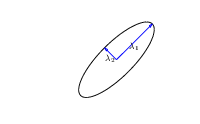
|
\(\boldsymbol{ \Lambda}\) represents distance on axes. \(\mathbf{R}\) gives rotation. |
Eigendecomposition of Covariance
- \(\boldsymbol{ \Lambda}\) is diagonal, \(\mathbf{R}^\top\mathbf{R}= \mathbf{I}\).
- Useful representation since \(\det{\mathbf{K}} = \det{\boldsymbol{ \Lambda}^2} = \det{\boldsymbol{ \Lambda}}^2\).
Capacity control: \(\color{yellow}{\log \det{\mathbf{K}}}\)
Quadratic Data Fit
Data Fit: \(\color{cyan}{\frac{\mathbf{ y}^\top\mathbf{K}^{-1}\mathbf{ y}}{2}}\)
\[E(\boldsymbol{ \theta}) = \color{yellow}{\frac{1}{2}\log\det{\mathbf{K}}}+\color{cyan}{\frac{\mathbf{ y}^{\top}\mathbf{K}^{-1}\mathbf{ y}}{2}}\]
Data Fit Term
Exponentiated Quadratic Covariance
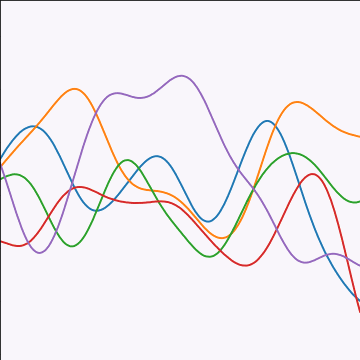
|
Where Did This Covariance Matrix Come From?
\[ k(\mathbf{ x}, \mathbf{ x}^\prime) = \alpha \exp\left(-\frac{\left\Vert \mathbf{ x}- \mathbf{ x}^\prime\right\Vert^2_2}{2\ell^2}\right)\]
|
Computing Covariance
Computing Covariance
Computing Covariance
Brownian Covariance
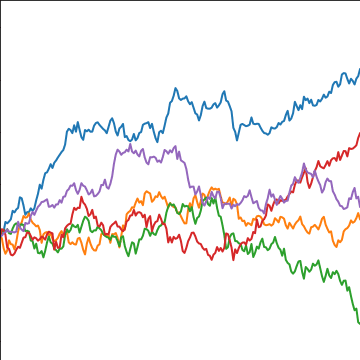
|
Where did this covariance matrix come from?
Markov Process
Visualization of inverse covariance (precision).
Precision matrix is sparse: only neighbours in matrix are non-zero.
This reflects conditional independencies in data.
In this case Markov structure.
Where did this covariance matrix come from?
Exponentiated Quadratic
Visualization of inverse covariance (precision).
|
rbfprecisionSample |
Covariance Functions
Markov Process
Visualization of inverse covariance (precision).
|
markovprecisionPlot |
Exponential Covariance
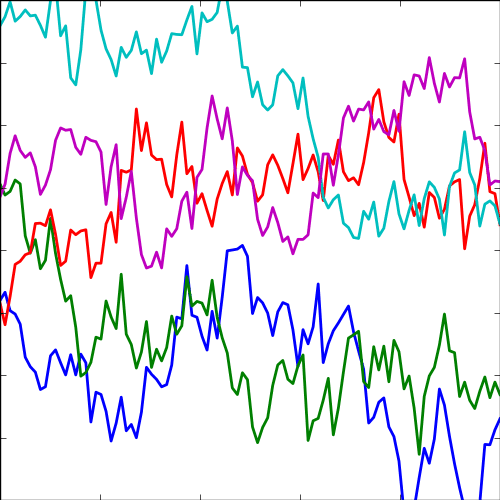
|
Basis Function Covariance
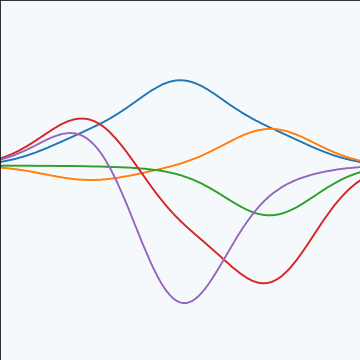
|
Degenerate Covariance Functions
RBF Basis Functions
\[ \phi_k(x) = \exp\left(-\frac{\left\Vert x-\mu_k \right\Vert_2^{2}}{\ell^{2}}\right). \]
\[ \boldsymbol{ \mu}= \begin{bmatrix} -1 \\ 0 \\ 1\end{bmatrix}, \]
\[ k\left(\mathbf{ x},\mathbf{ x}^{\prime}\right)=\alpha\boldsymbol{ \phi}(\mathbf{ x})^\top \boldsymbol{ \phi}(\mathbf{ x}^\prime). \]
Bochners Theoerem
Given a positive finite Borel measure \(\mu\) on the real line \(\mathbb{R}\), the Fourier transform \(Q\) of \(\mu\) is the continuous function \[ Q(t) = \int_{\mathbb{R}} e^{-itx} \text{d} \mu(x). \] \(Q\) is continuous since for a fixed \(x\), the function \(e^{-itx}\) is continuous and periodic. The function \(Q\) is a positive definite function, i.e. the kernel \(k(x, x^\prime)= Q(x^\prime - x)\) is positive definite.
Bochner’s theorem (Bochner, 1959) says the converse is true, i.e. every positive definite function \(Q\) is the Fourier transform of a positive finite Borel measure. A proof can be sketched as follows (Stein, 1999)
\[ f(\mathbf{ x}) = \sum_{i=1}^ny_i \delta(\mathbf{ x}-\mathbf{ x}_i), \]
\[ F(\boldsymbol{\omega}) = \int_{-\infty}^\infty f(\mathbf{ x}) \exp\left(-i2\pi \boldsymbol{\omega}^\top \mathbf{ x}\right) \text{d} \mathbf{ x} \]
\[ F(\boldsymbol{\omega}) = \sum_{i=1}^ny_i\exp\left(-i 2\pi \boldsymbol{\omega}^\top \mathbf{ x}_i\right) \]
\[ F(\omega) = \int_{-\infty}^\infty f(t) \left[\cos(2\pi \omega t) - i \sin(2\pi \omega t) \right]\text{d} t \]
\[ \exp(ix) = \cos x + i\sin x \] we can re-express this form as \[ F(\omega) = \int_{-\infty}^\infty f(t) \exp(-i 2\pi\omega)\text{d} t \]
\[ f(t) = \int_{-\infty}^\infty F(\omega) \exp(2\pi\omega)\text{d} \omega. \]
Sinc Covariance
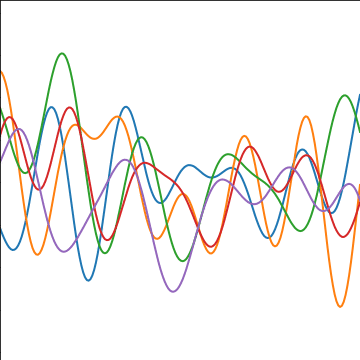
|
Matérn 3/2 Covariance

|
Matérn 5/2 Covariance

|
Rational Quadratic Covariance
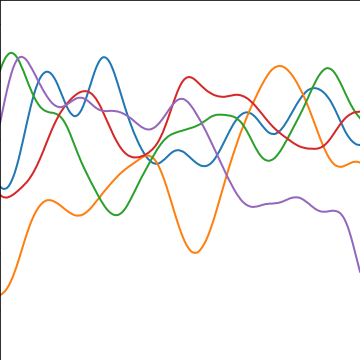
|
Polynomial Covariance
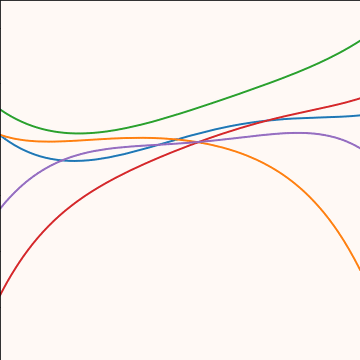
|
Periodic Covariance
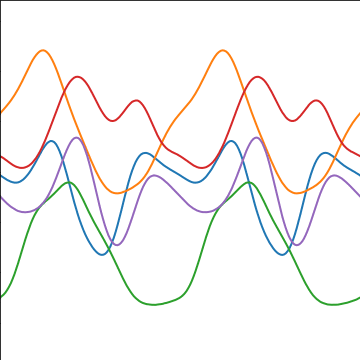
|
MLP Covariance
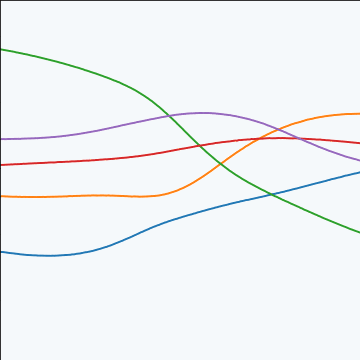
|
RELU Covariance

|
Additive Covariance
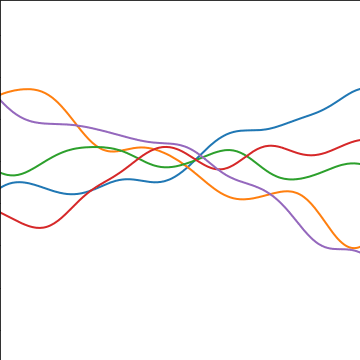
|
Product Covariance
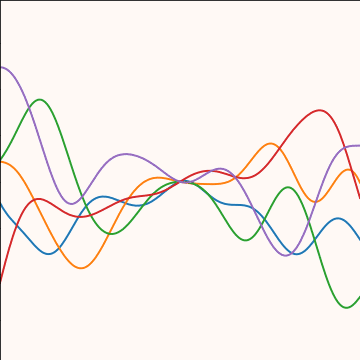
|
Mauna Loa Data
Mauna Loa Data
Mauna Loa Test Data
Gaussian Process Fit
Mauna Loa Data GP
Box Jenkins Airline Passenger Data
Mauna Loa Data
Gaussian Process Fit
Box-Jenkins Airline PassengerData GP
Spectral Mixture Kernel
Box-Jenkins Airline Spectral Mixture
Mauna Loa Spectral Mixture
Thanks!
- twitter: @lawrennd
- podcast: The Talking Machines
- newspaper: Guardian Profile Page
- blog: http://inverseprobability.com
